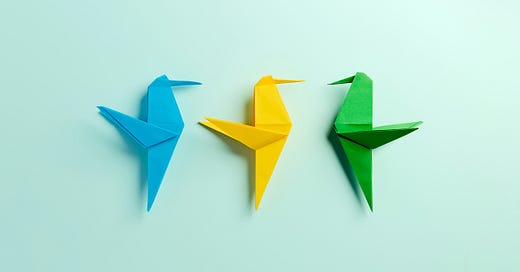How many weeks of your life do you have left?
I know, I know. That’s a pretty provocative question to hit you over the head with today, and it might make you squirm a little, but all the best things happen when we go right to the edge of our comfort zone.
Sometimes we kid ourselves that the number of weeks we have is infinite, until one day we’re abruptly reminded it’s not. It might come in the form of unexpected sickness (yours or someone else’s) or sudden death (obviously someone else’s), however it’s usually a long, slow realisation that inches imperceptibly up to you.
Oliver Burkeman wrote an excellent book, 4000 Weeks, that’s named after the average number of weeks we each get on this planet. That is, if we are lucky enough to dodge life’s curveballs all the way up until our 80s.
Along the way there are several arbitrary finish lines that punctuate our journey, the biggest one being retirement from full-time work, but it also can include children finishing school, when you move countries or homes, and the inevitable death of your parents. Sometimes these happen in a linear fashion when you roughly expect them, and other times they are violently thrust upon us with little warning.
So for this month’s Useful Thing, I’m sharing a simple tool I use to help put all of the small distractions of life into perspective to better focus on the meaty things that matter.
One Useful Thing for this month: Learn, Earn and Burn
When you distil life down into its simplest form, we have three distinct stages: learn, earn and burn.
Learn: The first 20 or so years of our life are all about education. Primary, secondary and senior school until our late teens, then maybe an apprenticeship, on-the-job training and some further study. The learning stage usually comes to an abrupt halt somewhere in our twenties.
Earn: We enter the full-time workforce in our late teens or early twenties, and work non-stop until retirement. There is occasional time off, most commonly to raise a young family, but we have roughly four decades to earn as much as we can to set us up for the final stage.
Burn: After retirement, we burn through the money that we’ve (ideally) saved during the earn phase, or that’s paid by our social security safety net, depending on where you live.
This is what it looks like if we plot out the typical three stages:
Where are you on this scale?
It might be a sudden jolt to realise that you’re in the tail end of your supposed earning years. Or it could be a realisation that you’re still near the starting blocks of a forty-year slog that lies ahead of you.
Living life in a straight line with no breaks can feel stifling, boring and predictable, but it’s the only model we’re taught when we are in the pivotal transition period between the Learn and Earn stages of life.
The truth is that you can switch up the three stages as much as you want. If you were to insert two career breaks into your life, roughly ten years apart, then you would have a life scale that’s peppered with multiple finish lines.
Another way is to overlap all of the stages, making the outcome less linear, with more integration between them. In this case, learning becomes a lifelong aim, earning capacity extends beyond a traditional retirement, and you spread your spending across a longer time period with less emphasis on always wanting more.
Instead of thinking of work as having a singular finish line, imagine there are several finish lines along the way. When you get to each one, give yourself permission to stop, celebrate the achievement, look back and properly recuperate before starting the next one.
How to use this tool:
Create your own personalised scale of your life, combining where you are on each of the three stages of Learn, Earn and Burn, and where your ideal finish lines are.
Draw a timeline.
Copy this blank scale, from ages 0 to 90, into a notebook.
Mark your age on it.
Draw a line that signifies how old you are now. This might feel confronting, but it’s a good way of getting some perspective on how much of your career and life you have left.
Add in any proposed finish lines.
Consider if there are any proposed breaks you’d like to take throughout your career. Add them into your timeline at the age you’d like to take them. These might include overseas travel, raising a family, education, house renovations, selling a business, long-service leave or just some time off the default mode of working.
Shade in future stages.
Starting from your age now, shade out your planned periods to learn, earn and burn. If you have any career breaks planned, think about what the mix of learning, earning and burning looks like during this period, and after it.
Once you’ve completed your ideal life scale you’ll have a better idea of how you can blend different parts of your life together. It’s pretty damn exciting to think about all the possibilities that can open up when you’re conscious of how you want to work and live.
I’m currently in Thailand, after a short but satisfying trip back home to Australia. My husband and I will be returning Spain next month after almost three months away during the Southern Hemisphere’s Summer, having successfully avoided most of the European Winter (yes, that was the ultimate goal).
I’ll be back in London next month for some more events to promote Work Backwards. After a successful book tour there last month, it’s so enjoyable spreading the messages inside to new audiences.
Until next month,
-Tim





